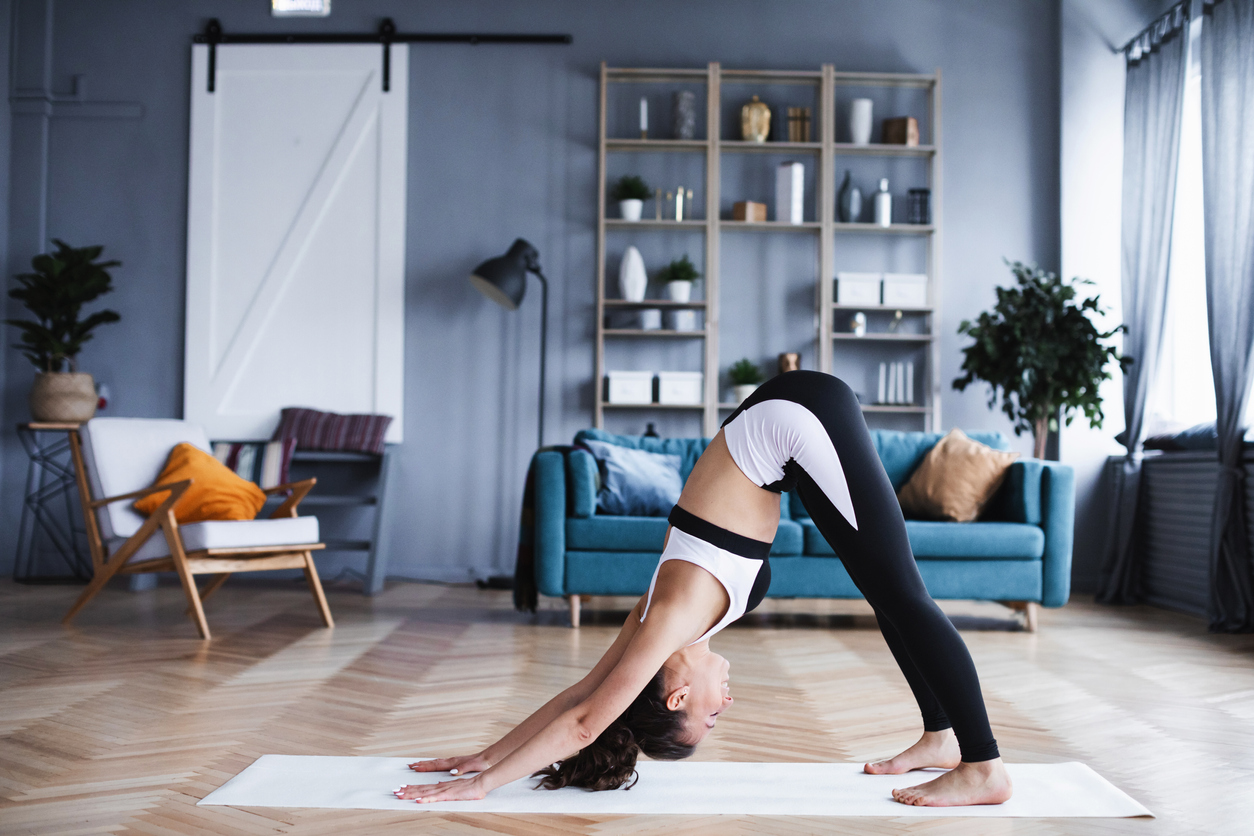Keeping fit at home

The last few months have taken a heavy toll on our mental, emotional and physical health and although we’re now allowed outside to exercise, our options remain severely restricted. Fitness equipment at parks is off-limits, swimming pools aren’t allowed to re-open, and it’s hard to imagine gyms and spas welcoming members back any time soon. Golf and fishing are unlikely to generate much adrenaline and it can be hard to socially distance in parks, especially at weekends.
In the absence of gyms and fitness equipment, there are various ways of keeping fit at home over the summer months. None will replace the satisfaction of completing a one-kilometre swim or the exhaustion that follows a spin class, but each of these suggestions can be carried out at home, either cheaply or at no cost:
Cardiovascular workouts
- Devise a daily reps routine. Although gym equipment is helpful when doing core exercises like press-ups and squats, you can easily do these at home. A roll-up yoga mat doubles as a supportive base on wooden or laminate floors, and you could hook your feet under a sofa or bedframe for added support during sit-up routines.
- Look to the classics. Yoga has promoted well-being for 5,000 years, and advanced routines are surprisingly tough. Pilates and tai chi represent easier ways to improve flexibility and muscle strength/tone, while potentially boosting cognitive functions. You could even try Barre workouts, though you’d need to install a dancer’s bar.
Basic equipment
- Buy a stepper. The height-adjustable Step Reebok platform is still on sale after nearly thirty years, though you can substitute it for the first step on your staircase or even a securely positioned plank. Step workouts build muscular strength and burn a surprising number of calories, while stepping is often combined with a skipping rope.
- Invest in dumbbells. These are superior to kettle bells because they offer far more flexibility; a single set of dumbbells can improve your entire body strength. The internet is bursting with suggested routines, often combining swings, squats, deadlifts and lunges in ten-rep routines. Best results are often achieved with alternate days off.
Online support
- Download a fitness app. The Google Play and Apple App Stores are bursting with free or low-cost apps, which require little more than supportive clothing and trainers. The Couch to 5K app is designed to help people take up running, by incrementally increasing the ratio of running to walking during 30-minute programmes.
- Turn to YouTube. With the best will in the world, you could never manage the entire repertoire of home exercise videos on YouTube, with specific programmes for men, women and people at every levels of fitness. It’s even possible to do high-intensity interval training (HIIT) at home, while many workout videos proudly announce they don’t require any equipment.
Home exercise should always be supported by modest lifestyle changes, such as increasing the amount of protein in your diet and switching to high-energy snacks like nut bars and bananas. Cooking with rapeseed oil instead of olive oil or butter/margarine can slash your consumption of saturated fats, while boosting omega-3 and vitamin E intake. Aim to drink two litres of water per day, which also dampens hunger pangs – thirst can easily be mistaken for hunger. Finally, aim to complete every journey of less than a mile on foot, only using the car for trips which would otherwise be impractical or require public transport.
Back to Latest Posts




